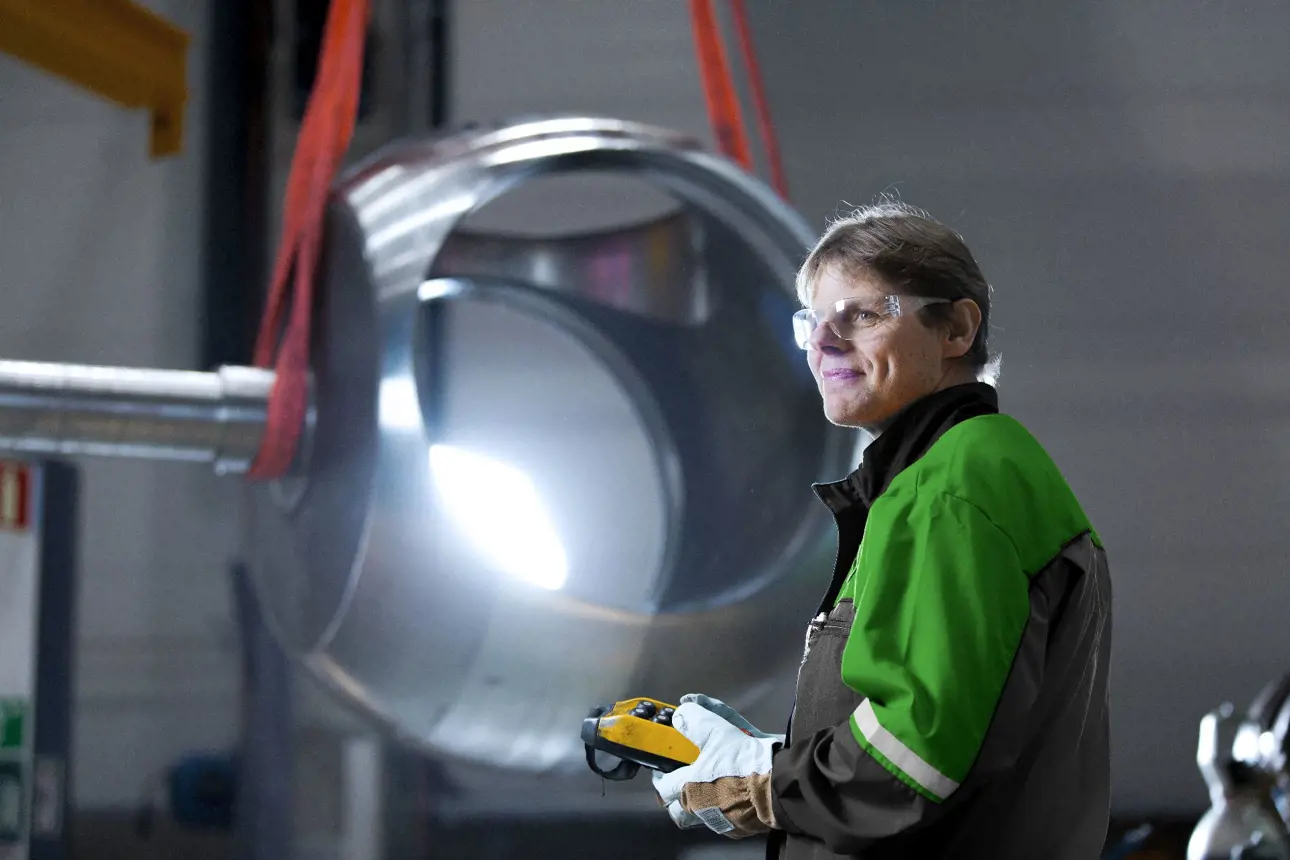
A wide range of valves on display in Vantaa. Johannes Soranta and Mikko Tikka (left) demonstrate valves to Visa Noronen.
Jul 16, 2023
Under pressure, the hydrogen molecule H2 cracks metal and can even penetrate steel. Hydrogen fracture weakens the tensile strength and ductility of steel, which reduces its resistance to fracture and causes cracking.

The ball valve is an excellent shut-off valve. As a very tight valve, it is suitable for use with gases and liquids.
Valves and similar equipment are the hardest hit when hydrogen pipes are built. When building hydrogen pipelines, 80% of the cost is generally spent on valves, compressors, metering equipment and heat exchangers, as these are the most demanding parts to produce. The joints are also the most prone to gas leakage.
The cheapest way to transport large quantities of hydrogen within the continents is usually by gas pipeline. Across Europe, there are plans to convert old natural gas pipelines to transport hydrogen. According to Mr Tikka, getting approval in different locations could prove too expensive.
Valmet's valve expertise comes in particular from the Neles heritage. Neles valves have already been used in tens of thousands of hydrogen and oxygen applications around the world. The merger between Neles and Valmet was completed last year.
Hydrogen has always been used in applications such as oil refining. Now, as the hydrogen industry grows rapidly, Valmet is drawing on what Neles has learned from supplying valves to the oil and gas industry since the 1960s.
Today, Valmet offers a wide range of segment, butterfly, ball and other valves for hydrogen applications ranging from electrolysis to carbon recovery. The valves operate both in low pressure electrolysers and in high pressure electrolysers operating at temperatures up to 700˚C.
Electrolysers typically need to respond very quickly to supply fluctuations when dealing with renewable energy. This means that internal processes require rapid adjustment, and valves must provide accurate control with fast response times.
Valmet's aim is to have Valmet automation in the zero-emission hydrogen production plants as well.
The hydrogen plant has many safety-critical valves, and fault diagnostics are an essential part of the automation system's functionality.
Tikka and Tanner will demonstrate the manufacturing process at the valve production plant in Vantaa, and different valves will also be shown being tested in different ways in the large factory hall under strictly regulated conditions.
Hydrogen may not even be the most difficult gas to build hydrogen plants with - and equipment used with oxygen gas in testing therefore seems to get more attention than hydrogen equipment. To avoid accidents, oxygen equipment and pipes are given a final cleaning before the process is started.
Text: Visa Noronen, Communications, BotH2nia Network. This article was originally published on www.both2nia.com in April, 2023

A wide range of valves on display in Vantaa. Johannes Soranta and Mikko Tikka (left) demonstrate valves to Visa Noronen.

Mikko Tikka (left) and Heikki Tanner walk around the Valmet’s factory hall always wearing safety vests and goggles.

Subscribe to our newsletter
Subscribe now to flow control newsletter and receive the latest insights directly to your email.
SubscribeRelated articles